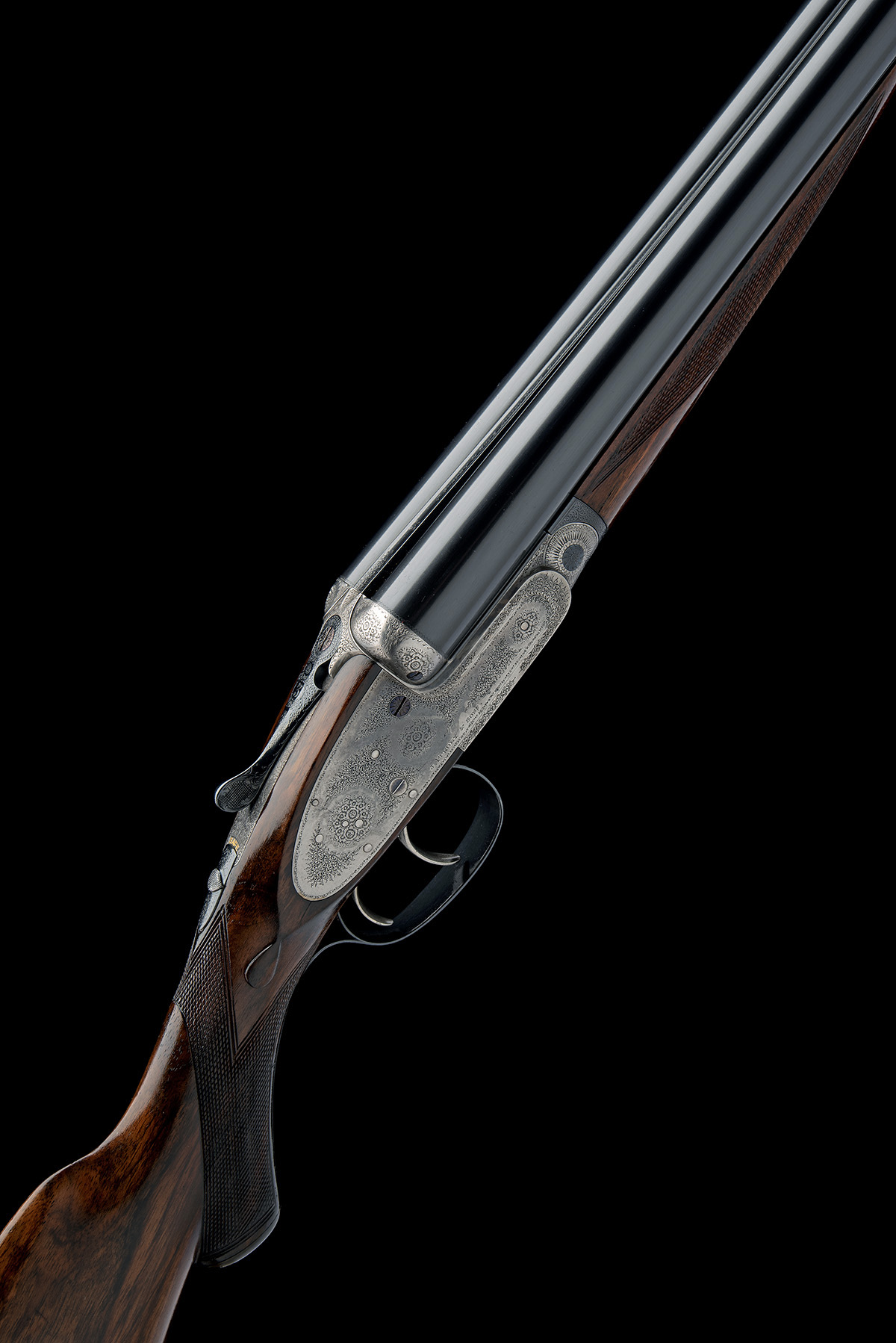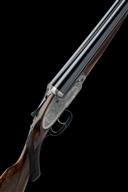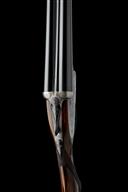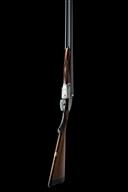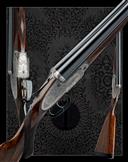Product Details
FORMERLY THE PROPERTY OF SIR THOMAS SOPWITH C.B.E.
J. PURDEY & SONS
A 12-BORE SELF-OPENING SIDELOCK EJECTOR, serial no. 25063,
for 1935, 28in. nitro reproved chopperlump barrels (in 1995), sunken rib engraved '3' and 'J. PURDEY & SONS. AUDLEY HOUSE. SOUTH AUDLEY STREET. LONDON. ENGLAND.', 2 1/2in. chambers, bored approx. 1/4 and 3/4 choke, self-opening action with removable striker discs, toplever numbered '3', automatic safety with gold-inlaid 'SAFE' detail, cocking-indicators, best border and acanthus scroll engraving with floral bouquets, retaining traces of original colour-hardening and renewed bluing, 15in. figured pistolgrip stock including 1in. leather-covered recoil pad, gold escutcheon engraved with the monogram 'T.S.' (rubbed), weight 6lb. 9oz., in a James Purdey & Sons "The Lightweight" leather double motor case with some accessories
Provenance: We are kindly informed by the makers that this shotgun was completed in November 1935 for Col. H.P. Green and to match his existing pair, serial nos. 24941/2. The makers also confirm that is was subsequently re-sold to Sir Thomas Sopwith, C.B.E.
Sir Thomas was born January 1888, the last of eight children and only son to Thomas Sopwith, a prominent civil engineer. He was educated at Cottesmore in Hove and Seafield Park College of Engineering. In his youth he was an expert ice skater and was a member of the English gold medal winning ice hockey team at the first European Championships in 1910.
In the same year, his love of transport branched into aviation after seeing the Canadian, John Moisant, pilot the first cross-channel flight with a passenger, and it was soon after that he took to the air in a Farman bi-plane at the fledgling aerodrome at Brooklands. He was a natural pilot and was granted his certificate of competence by the Royal Aero Club only three months after gazing skyward at Moisant. In the December of that year he won the large sum of £4,000 for making the trip of longest duration between England and the continent in a British built aircraft and flew the 169 miles in 3 hours 14 minutes. He ploughed his winnings into setting up a new company; the Sopwith School of Flying at Brooklands.
The slow mobilisation to hostilities began in Europe several years before the outbreak of the Great War as dissent slowly rose between different governments, royal families and the pacts that existed between different countries. 'Tommy' Sopwith was only twenty four years old when he founded the Sopwith Aviation Company which was based initially in a disused ice rink at Kingston upon Thames. The company's first design was called the 'Bat Boat' and was an amphibian built in collaboration with Saunders Boatyard (later Saunders & Roe) of Cowes. As the storm clouds gathered though, Sopwith turned his attention to military designs and the first of these to gain serious recognition was the 'Tabloid' which won the Schneider Trophy in 1914. Whilst quickly surpassed by his other designs, this type was used by both the Royal Naval Air Service and the Royal Flying Corps at the start of the war. Sopwith, in conjunction with his chief designers Harry Hawker and Herbert Smith, went on to produce perhaps the best-known of the allied types including the 'Pup', 'Camel' and the tri-plane. The latter was a difficult aeroplane to fly but was highly-rated by those who mastered it for its excellent manoeuvrability. The design was much-copied by other allied powers and also by the Germans; the famous Fokker tri-plane owed much of it's lineage to Sopwith's designers.
By the end of the Great War Sopwith Aviation, together with its sub-contractors, had built over 16,000 aircraft and employed 5,000 members of staff. However, the early post-war years were a difficult time and aircraft companies found it hard to sell civil designs to a market that was able to purchase war surplus at knock-down prices. Sopwith turned his attentions briefly to producing motorcycles but this was a short-lived venture and in the face of harsh anti-profiteering taxes the company went into liquidation in 1920. Almost immediately Sopwith, together with key members of his team, set up H.G. Hawker Engineering (later Hawker Aircraft) and went on to produce many of the best military designs of the next four decades including the 'Hart', 'Fury', Hurricane' and 'Hunter'. The company later amalgamated to become Hawker Siddeley, and Sopwith was to remain chairman until his retirement.
Sopwith's other great love was yachting and he was a highly sought-after helmsman. The 1930s was the last decade of the large and wonderfully elegant steel-hulled 'J' class yachts that dominated the Americas Cup, and Charles Nicholson (of Camper & Nicholson) was commissioned to design a challenger to the then holder of the cup, 'Rainbow'. The yacht was named 'Endeavour' and her first outings on the racing circuit were highly successful beating both 'Valsheda' and 'Shamrock V'. Sadly though, she was not able to wrest the cup from 'Rainbow'. Sopwith tried again in 1937 with the Nicholson designed 'Endeavour II' but she was beaten by the American 'J' 'Ranger'.
Sopwith lived a long life and his 100th birthday was suitably marked by a flypast of military aircraft over his home in Hampshire. He was one of Great Britain's pioneering aviators who also held a passion for motor racing, sailing and shooting and died aged 101, in January 1989
Please click HERE to view Terms & Conditions. Please note all Lots are listed in accordance with UK Law, for overseas buyers, please ensure you are familiar with your relevant local firearms and customs regulations before bidding.
Estimate £10,000-15,000
S2 - Sold as a Section 2 Firearm under the 1968 Firearms Act

